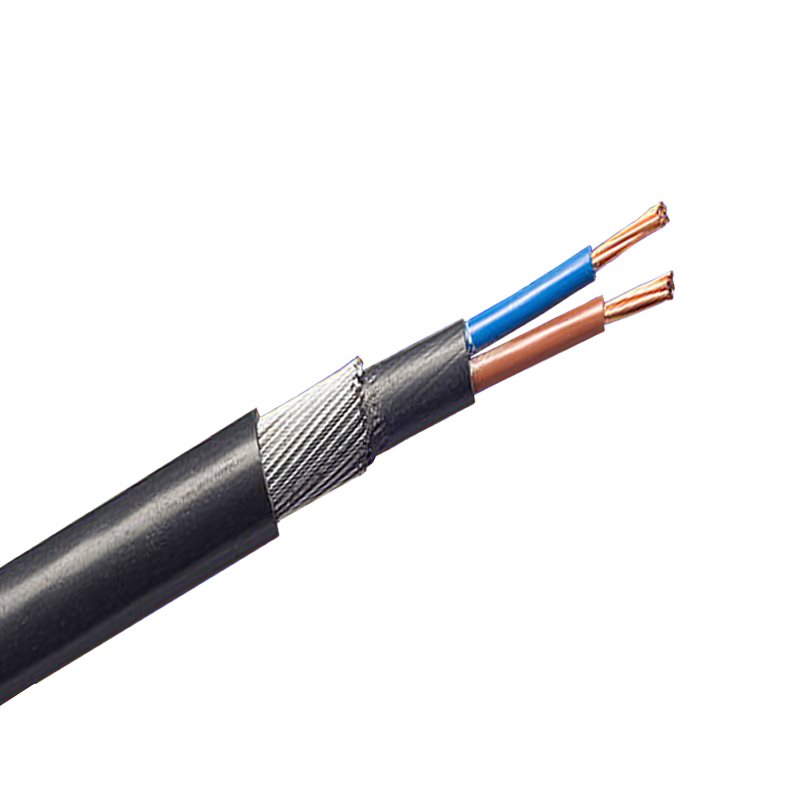In this article, I will delve into the numerous advantages that come with the utilization of multicore cables over their single-core counterparts, offering a comprehensive insight into the versatility of these cables across various applications.
Introduction to multi-core cables:
First, let’s take a brief look at multicore cables. Compared with single-core cables, multi-core cables contain multiple insulated cores within the same cable sheath, making their applications in electrical and electronic systems more flexible. In contrast, single-core cable consists of a single conductor, usually wrapped in insulation. The fundamental differences between these two cable types form the basis for our understanding of the advantages of multi-core cables.

Flexibility and maneuverability:
Multicore cables offer clear advantages in terms of flexibility and maneuverability. Since the same sheath contains multiple core wires, its structure is softer and easier to adapt to various scenarios. This flexibility is especially important in applications where cables need to traverse tight spaces, complex paths or require frequent movement. By comparison, single-core cables may prove inflexible in these scenarios.
Simplified installation and maintenance:
Time is often of the essence during cable installation. Multicore cables simplify the installation process by consolidating multiple conductors into a single cable. This not only reduces the overall bulk of the cable, but also simplifies routing and termination procedures. The result is a more efficient installation process, contributing to time and cost savings. Additionally, the organized structure of multi-core cables helps identify and resolve problems more quickly when it comes to maintenance or troubleshooting, which can be more complicated in a single-core cable setup.
Signal integrity improvements:
Multicore cables excel in scenarios where signal integrity is critical. The separation of different cores in the same cable reduces the possibility of electromagnetic interference (EMI) and crosstalk between conductors. This is particularly critical in applications involving data transmission, telecommunications and control systems, where maintaining signal integrity is non-negotiable. Single-core cables, on the other hand, may be more susceptible to signal degradation and interference due to the proximity of the conductors in the same sheath.

Versatility across applications:
The versatility of multicore cables is a key reason for their widespread adoption. This cable is designed to meet a variety of applications, from power distribution to data transmission. Accommodating conductors with different functions in the same cable gives multi-core cables a level of adaptability that is difficult to achieve with single-core cables. Whether in industrial automation, audio and video systems or automotive applications, multi-core cables provide a one-inch solution that simplifies inventory management and procurement.
Efficient use of space:
When space is limited, multi-core cables become the leader in saving space. Consolidating multiple cores into one jacket optimizes the use of available space. This is critical in dense control panels, cable trays, or space-constrained environments. This efficient use of space not only helps create a cleaner, organized layout, but also aligns with contemporary design principles that emphasize compactness and ergonomic solutions.
Cost-effective solution:
While the initial cost of multicore cables may be slightly higher than single-core cables, the overall cost benefits of a multi-core solution become apparent over the long term. Simplified installation, reduced maintenance requirements and versatility in a variety of applications combine to result in a lower total cost of ownership. Multi-core cables are considered a strategic investment, contributing to reliability, efficiency and long life.
Installation and inspection of multicore cables
After the welding of all core wires is completed, wrap the ends of the spare wires with heat shrink tubing. Then tighten the tail cover of the electrical connector and fix the top end with the screw. At the same time, use insulating tape to wrap the compression ring on the surface of the cable. After it is done, pull out the shielding layer of the core wire and connect it with a screw on the compression ring. Make the connection. After the connection is completed, tighten the screws at both ends of the compression ring. After the tail cover of the electrical connector is installed, it should be connected and fixed with the cable to keep it stable. During the installation process, if the outer diameter of the cable exceeds When the tail cover of the electrical connector is small and the range of the electrical connector tail cover is large, the tail cover cannot fix the cable well, then a suitable heat shrinkable sleeve should be selected and placed at the end of the tail cover. After wrapping, shrink the cable mark to The tail of the electrical connector, and during this process, pay attention to the fact that the cable identification is consistent with the position of the electrical connector. After the multicore cable is installed, the cable must be inspected. During the inspection process, the previously designed drawings and process requirements must be strictly followed. When inspecting the cable, the main purpose is to check the cable model, length, insulation conditions, and performance, etc.
Summarize:
In summary, multicore cables have demonstrated advantages over single-core cables in terms of flexibility, simplified installation and maintenance, improved signal integrity, versatility across applications, efficient use of space, and cost-effectiveness. These advantages are noteworthy. As a practitioner in the field of electrical engineering, I explore these advantages in-depth and highlight the wide range of uses of multi-core cables in a variety of applications. During the actual installation and inspection process, precise handling and qualified inspection of cables are key steps to ensure stable and reliable performance. The selection of multi-core cables is not only to meet current needs but also to meet the challenges of future technological innovation. Therefore, as an electrical engineer, an in-depth understanding and application of the advantages of multicore cables is not only a choice but also a strategic necessity to promote the construction of resilient and efficient electrical infrastructure.




